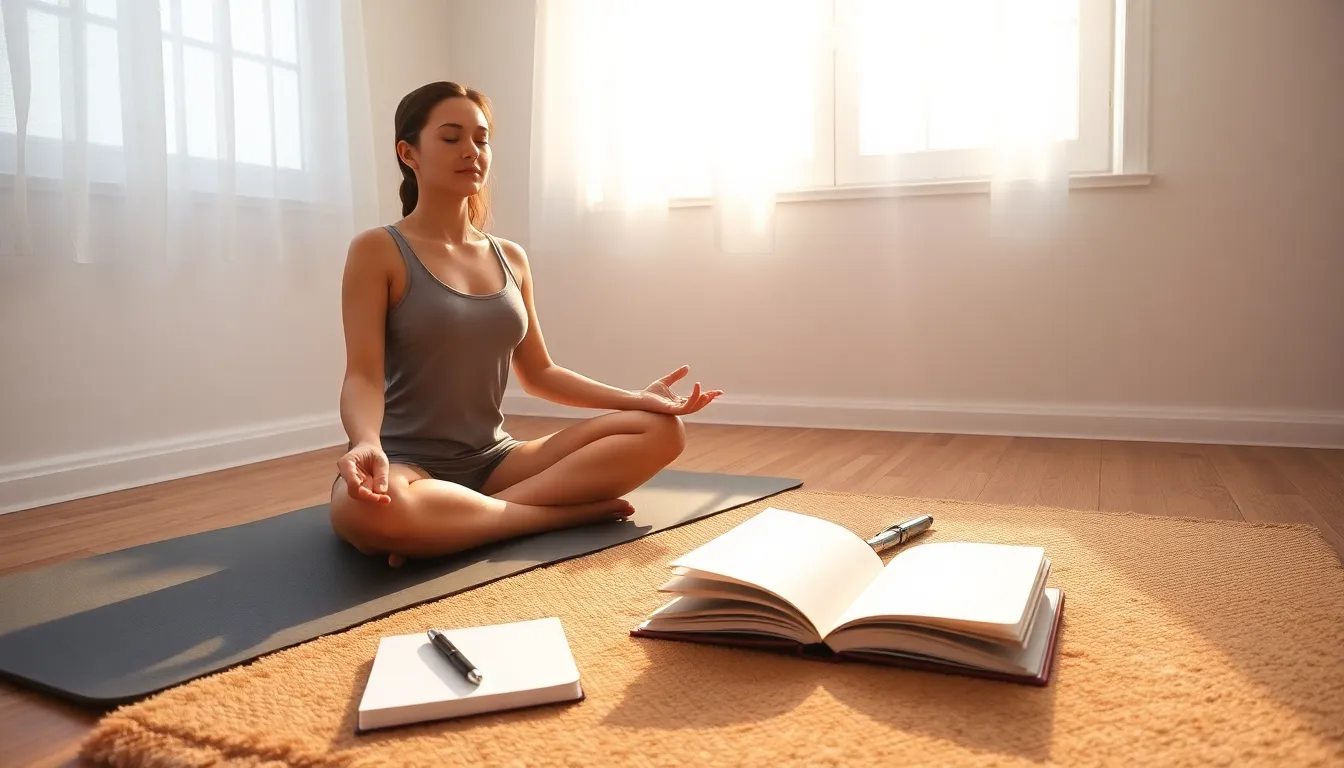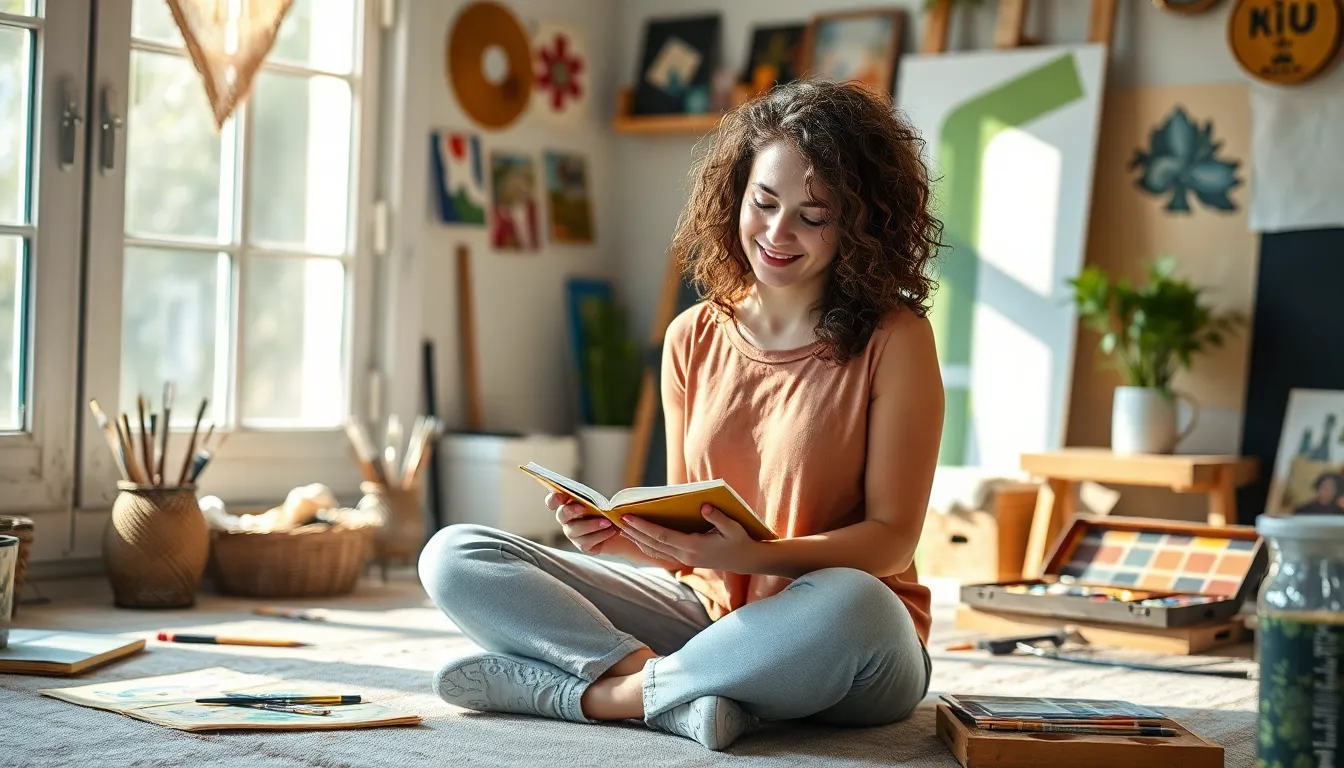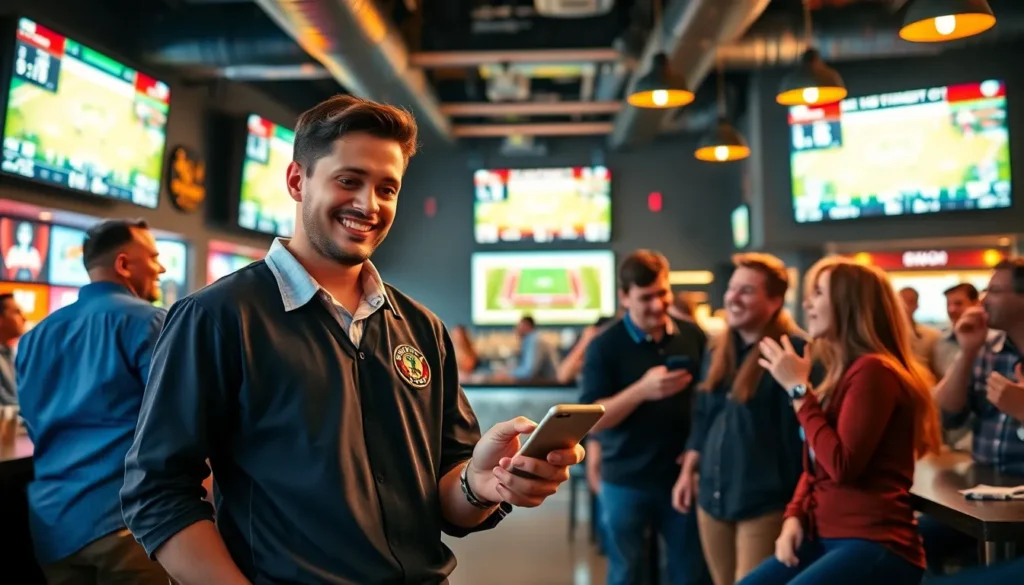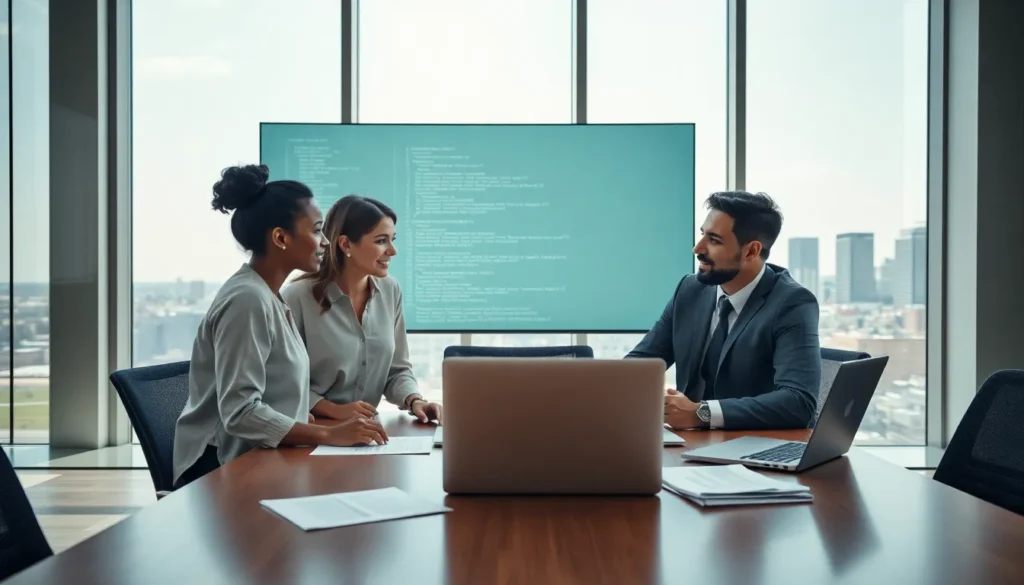Table of Contents
ToggleIn a world buzzing with distractions and endless to-do lists, finding a moment of clarity can feel like searching for a needle in a haystack. Enter mindful creativity, the magical blend of awareness and artistic expression that promises to unleash the inner genius lurking within. Picture this: instead of mindlessly scrolling through social media, you’re fully immersed in the colors, sounds, and textures around you, transforming everyday moments into bursts of inspiration.
Understanding Mindful Creativity
Mindful creativity blends awareness and artistic expression, enabling individuals to experience clarity. This practice transforms daily routines into moments of inspiration, shifting focus from distractions.
Definition of Mindful Creativity
Mindful creativity refers to the intentional act of creating while fully present in the moment. Individuals engage in creative activities, such as painting or writing, with awareness of their thoughts and feelings. This approach fosters a deeper connection to one’s work, enhancing both the creative process and the final outcome. Practitioners often find that mindfulness unlocks new ideas and perspectives.
The Importance of Mindfulness in Creative Processes
Mindfulness enhances creativity by promoting focus and reducing distractions. It encourages individuals to explore their thoughts without judgment, leading to innovative ideas. Cultivating this awareness allows creators to break free from conventional patterns and think outside the box. Engaging with one’s creativity in a mindful way can lead to a more satisfying experience and improved artistic results. Embracing mindfulness invites creativity to flourish within a supportive mental framework.
Techniques for Cultivating Mindful Creativity

Cultivating mindful creativity involves various techniques that enhance focus and inspire innovative thought. Two effective methods include meditation and journaling.
Meditation and Its Role
Meditation plays a crucial role in fostering mindfulness within creative processes. Engaging in regular meditation promotes mental clarity and reduces distractions. Practitioners often notice enhanced focus on the present, which allows for deeper exploration of thoughts. Techniques such as breath awareness and visualization can facilitate this mindfulness. Individuals report that even short sessions significantly impact their creativity, allowing new ideas to emerge more freely.
Journaling as a Mindful Practice
Journaling serves as another powerful tool for nurturing mindful creativity. Writing daily encourages individuals to articulate thoughts and feelings without judgment. This practice not only improves self-awareness but also helps clarify ideas. Incorporating prompts can guide reflection and exploration of creative themes. Engaging in journaling regularly provides a safe space for experimentation, leading to unexpected insights and artistic breakthroughs.
Benefits of Practicing Mindful Creativity
Mindful creativity offers numerous benefits that enhance artistic expression and overall well-being. Engaging in this practice cultivates focus while diminishing stress levels.
Enhanced Focus and Concentration
Enhanced focus and concentration emerge as primary benefits of mindful creativity. By being present during creative tasks, individuals minimize distractions from external stimuli. They develop a deeper connection to their work, allowing for increased clarity. Practices like meditation help sharpen attention and eliminate scattered thoughts. Improved concentration often leads to higher-quality ideas and richer artistic expression.
Reduction of Stress and Anxiety
Reduction of stress and anxiety represents another significant advantage of practicing mindful creativity. Engaging fully in the creative process promotes a sense of relaxation. Participants often find that expressing thoughts and emotions through art alleviates feelings of overwhelm. This practice encourages a non-judgmental attitude, enabling individuals to explore their creativity freely, without self-imposed constraints. As a result, stress levels decrease, creating an environment conducive to innovative thinking and emotional well-being.
Real-Life Applications of Mindful Creativity
Mindful creativity finds expression in various aspects of life, from professional environments to artistic pursuits.
Mindful Creativity in the Workplace
In workplaces, mindful creativity plays a vital role in enhancing productivity. Employees who engage in mindful practices often report improved focus and reduced stress. Regular mindfulness sessions encourage teams to brainstorm without judgment, leading to innovative solutions. Creative breaks, such as short meditative exercises, can reinvigorate thinking and inspire collaboration among colleagues. Many organizations now incorporate mindfulness workshops, fostering an environment where creativity thrives and ideas flow freely.
Mindful Creativity in Art and Self-Expression
Artistic expression benefits immensely from mindfulness. Artists who practice mindfulness often tap into deeper emotional insights, enriching their work. They explore thoughts without judgment, resulting in authentic creations that resonate with audiences. Techniques like mindful drawing or writing promote exploration of the creative process itself. Engaging fully in artistic endeavors leads to unexpected discoveries and breakthroughs in style and technique. Many creators find that this approach transforms their relationship with art, shifting it from a task to a fulfilling journey.
Mindful creativity offers a powerful way to enhance both artistic expression and personal well-being. By fostering awareness and presence in the creative process, individuals can unlock new ideas and transform their experiences. The techniques discussed not only promote focus but also create a safe space for exploration and innovation. As people embrace mindful practices like meditation and journaling, they’ll find that their creativity flourishes. This holistic approach not only enriches their work but also nurtures emotional health, making the journey of creation more fulfilling. Ultimately, integrating mindfulness into creativity can lead to profound artistic breakthroughs and a deeper connection to one’s inner self.




